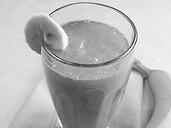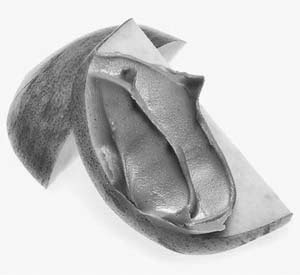Nutritional Value of Nut Butters for Athletes

We all grew up with two kinds of peanut butter: JIF and Skippy. They even diversified partway through our childhood to include both creamy and crunchy options, and for a long time that was all we had to decide between. The 21st century ushered in an age of nutritional focus like never before, and with it, a large push to remove processed foods in favor of wholesome, natural foods. What has replaced JIF and Skippy are a slew of peanut, almond, sunflower, cashew and almost any other nut butters that are naturally blended in the grocery store from pure nuts.
Because healthy food options are often confusing, and because we have departed from our trusted labeled peanut butters of the 90s, I’ll take you through the various options and their health implications to help you decide which natural nut butter you want to try next.
The important, beloved butter: peanut butter.
Why is the more solid Jif or Skippy worse for your health than the more liquid natural peanut butter? And what does the famous “fully hydrogenated” phrase mean? Hydrogenating oils will give them a long shelf life (why your Jif container says “good for years to come”). Peanut butter is made solid by hydrogenating it under extreme conditions that can produce trans fatty acids. Trans fatty acids are not found in nature and our bodies don’t know how to break them down.
Health nuts (no pun intended) prefer eating natural peanut butter that has not been processed in any manner, and this really is the way to go. In some places, you can have the peanuts crushed up at the grocery store and have the paste poured directly into a container for you. You’ll notice that your peanut butter is more fluid, and this is due to the lack of hydrogenation. Fats that are more liquid at room temperature pack together less tightly and cannot store as easily in the body. Even when the peanuts aren’t crushed to order, it's easy to recognize natural peanut butter by the layer of oil separated on the top. But just to be safe, check the ingredients on the back and make sure only peanuts and other minimal ingredients are listed. Once you open your peanut butter, stir in the oil and keep the jar refrigerated.
Peanut butter health: Many people I come across believe that peanut butter is a fantastic protein source in their meals. Sorry to break it to you, but this just isn’t the case. In one tablespoon of peanut butter, you get about 4 grams of protein. In that same tablespoon, roughly 72% of calories are from fat, 12% from carbohydrates, and 16% from protein. For comparison, the same amount of protein may be found in a half glass of low-fat milk, and 1 average Greek yogurt container can have 4 times as much protein!
Athletes must change their mindset by thinking of peanut and other nut butters as a good source of fat, not of protein.
The protein component is on the smaller side, and what you are really getting with nut butters is the satiety from good fats. Portion sizes are also a source of difficulty for peanut butter lovers. One tablespoon is about 94 calories, meaning about 70 calories in each tablespoon come from fat, so consider the size of your scoop to benefit from good fats without overdoing it. I add peanut butter to apple slices or bananas to give myself a snack that includes quick energy from the carbohydrate in the fruit and satiety with steady energy from the fat in the butter.
The newer butter: almond butter.
I only recently became accustomed to eating almond butter and already enjoy this great alternative to peanut butter.
Almond butter offers more Vitamin E, Iron, Calcium, magnesium, phosphorus, potassium and antioxidants than peanut butter.
Almond butter fat composition is also healthier: it contains more monounsaturated (good) fat and less saturated fat relative to peanut butter. Both butters have the same amount of total fat and the same caloric value. Because almond butter is produced on a smaller scale and almonds are pricier than peanuts, a jar will run several dollars more than that of peanut butter. I add almond butter into my smoothies to help sustain my appetite and energy longer; it adds good texture and flavor to my snack!
A less advertised but no less tasty butter is sunflower butter.
Look particularly for the Unsweetened Organic Sun Butter, which is made without hydrogenation and also contains that natural layer of oil on the top of the jar. In comparison to peanut butter, sun butter offers one third less saturated fat and fewer total calories from fat (about 10% less fat). Sun butter may be found in Whole Foods and Trader Joe’s grocery stores. In terms of flavor, sun butter tastes exactly like sunflower seeds. I don’t put it in my smoothies but I do use it in all the same ways I would with peanut butter (pairing with fruit is great).
For those with peanut allergies or tree-nut allergies, sun butter is a great alternative. It is processed on machinery free of other contaminants with allergy-conscious consumers in mind.
Depending on your personal taste preferences and allergy restrictions, try the nut butter that is right for you! As long as you stick with the natural, “oil on the top” butters, you will reap the nutritional value of nut butters. They can be a great supplement to an athlete’s diet by increasing feelings of satiety and sustaining energy for a longer period of time. Grab a jar and go nuts!


Bridge Recipe:
Whether it be between workouts, a late night refuel, or a early morning pick-me-up, we like to enjoy a chocolate, banana, nut butter, protein smoothie. Ingredients needed:
- 2 bananas.
- 1-2 scoops of chocolate protein powder of your choice. (check out our post on protein comparison here)
- 2 spoonfuls of nut butter of your choice.
- 1.5 cups of milk of your choice. (check out our post on milk comparison here)
- Ice (added to your liking).
- Blend all ingredients until contents are mixed and ice is crushed to consistency of your choosing. Enjoy.
1. http://www.fatsecret.com/calories-nutrition/generic/peanut-butter
2. http://athleticmindedtraveler.com/blog/almond-butter-versus-peanut-butter-which-is-the-healthier-choice
3. http://www.sunbutter.com/products-organic.php




